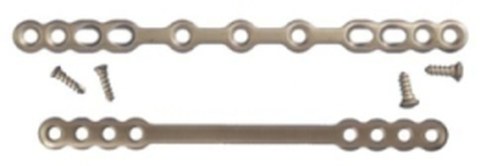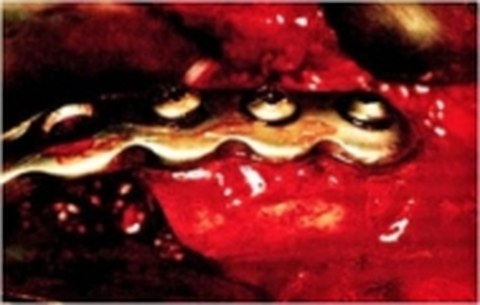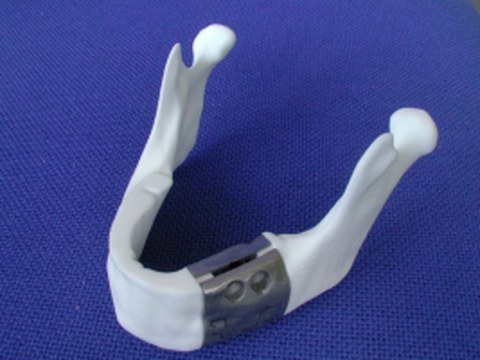Development of effective methods and software solutions for low-effort modelling of individual implant structures
| Runtime | 01.04.2009 - 31.03.2012 |
| Funding | Sächsische Aufbaubank, Technologieförderung |
| Project staff | Dr.-Ing. habil. Christine Schöne (former staff member) |
| Dr.-Ing. Philipp Sembdner | |
| Partners | Uniklinikum: Poliklinik für Zahnärztliche Prothetik |
|
Zentrum für Mund-Kiefer-Gesichtschirurgie und Zahnheilkunde Dresden |
|
| Engel Produktentwicklung GmbH |
Objective
The reconstruction of bone defects, especially in the oral, maxillofacial region, using ostheosynthesis implants is a great challenge. Special advantages can be achieved here by the novel contour and stiffness-adapted design of the implants to the respective geometric and elastic conditions, as this specifically prevents complications during ingrowth and reliability.
The currently used Ti reconstruction plates usually have significant functional and structural-mechanical deficits as well as aesthetic disadvantages due to a high stiffness jump between the Ti implant and the bone and due to the poorly customised geometry. However, the economic manufacturing processes required for contour- and stiffness-matched implants are not yet available.
The first technological approaches for the production of new types of filigree contour-identical and graded stiffness-adapted implants are offered by the innovative laser CUSING process, which can be used to realise force-flow-appropriate support structures in the sense of biomimetics.
Conventional reconstruction plates for bridging defects in the oral, maxillofacial region and their frequent screw loosening:
Contour-identical titanium implant as a 3D model and on the model jaw:
An essential objective of the planned research work is to further develop cell growth-promoting implant structures that enable them to remain in the body permanently, taking into account the results of the upstream project "Development of laser CUSING technologies for the production of contour-identical titanium implant structures".
A further objective of the planned research work is to develop a process chain, taking into account a rapid manufacturing procedure, which realises the path from the CT slice images of a concrete diseased patient to the individual production of bone implants and fitting of the patient.



